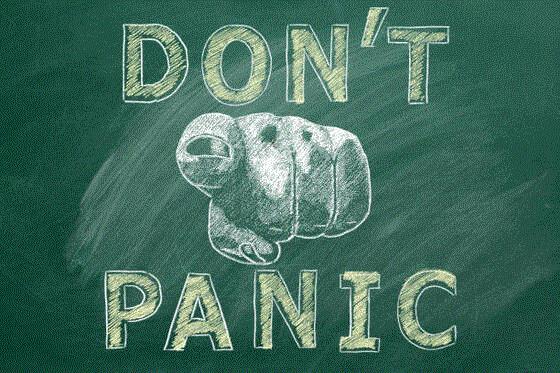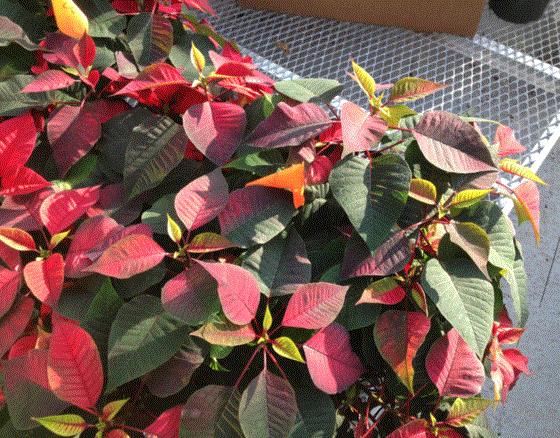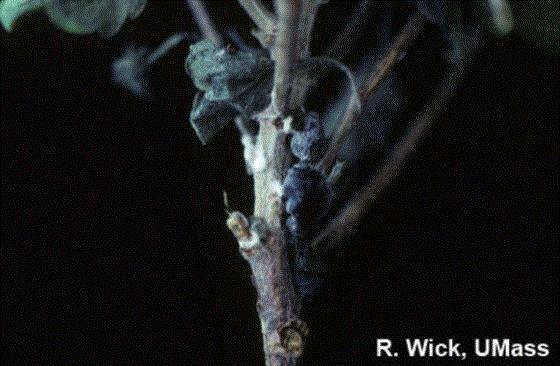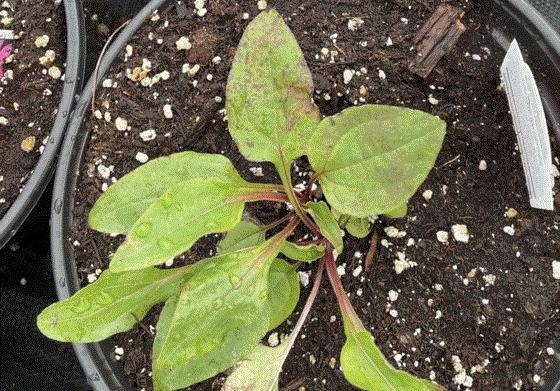State of the Industry: Don’t Freak Out!
While the spring season wasn’t record-breaking by any means, there are plenty of reasons to remain optimistic. Judging by the vast crowd of people attending the Monday morning keynote at AmericanHort’s Cultivate’24 event this week, finding guidance from the folks who study the industry at a macro level is as important now as it has ever been. In the words of Ken Fisher (president and CEO of AmricanHort), if you have questions about industry data, the economy, the election or how to plan for 2025, ASK DR. HALL!

Here's what green industry economist and Texas A&M prof Dr. Charlie Hall had to say to the crowd. Oh, and the title of this news piece was his Monday mantra: it’s too early to freak out.
Charlie reminded everyone to take the big-picture data points and drill down to your unique business and region when planning ahead. Know the customers you serve. And don’t make decisions based on one-year data, because it doesn’t always tell the full story. Charlie compared the 2024 numbers to 2019 (pre-pandemic) and the story was quite positive.
All that said, here are some bullet points from his talk, which was based on information from his market studies and national data sources:
-
Looking at gross sales from spring 2024 versus spring 2023 (based on growers surveyed by Charlie’s market studies), about 1/3 were up, 1/3 were down and 1/3 were basically flat.
-
BUT, compared to 2019, 98% were up, with about 65% up by more than 25%.
-
In terms of units sold, more than half of growers surveyed were down.
-
Looking at spring profit, the numbers (up/down) were 50/50. But the “tails” of the data from 2024 versus 2023 were significant: 19% of growers surveyed were up 25+% and 9% were down 25+%.
-
But again, compared to 2019, 81% of growers surveyed were up, and 37% up more than 25%.
That data was all based on wholesale greenhouse sales, but Charlie says the story is pretty much the same for all market venues—IGC, big box, landscapers—with the outliers being sales to municipalities and direct-to-consumer strategies.
-
Specific to independent garden centers, gross sales and customer counts were down 1 to 2% overall in 2024 versus 2023, but the differences by region were significant (more on that in a minute).
-
BUT those who participated in the studies are up 40% compared to 2019 in sales and 12+% in customer count.
-
As Charlie said, we’re back to normal—post pandemic boom—in the sense that weather is once again a significant factor in retail revenue.

State of the Industry: Stay Positive!
It’s always interesting to dig into the details of the data to benchmark where your operation stands, but I think most come to Charlie’s talk and log on to his webinars to hear what this economist says about the near future. He always takes time to look forward, and although predictions are nearly impossible to make and the usual answer is “it depends,” there are indicators to consider.
-
Landscape service demand is strong, driven by housing AND demographic shifts. And as each generation ages, landscape services will continue to grow in importance.
-
The cost of doing business (inputs, labor, trucking, etc.) continues to increase. Cost of goods was up about 1% in 2024 compared to 2023 and is expected to rise another 3.2% in 2025 (trucking and labor). Bottom line: Continue to raise prices to cover this cost and to drive growth.
-
Although overall consumer purchases of seeds, flowers and potted plants (not shrubs) has plateaued, it has NOT declined post-recession like in the past. Bottom line: Don’t lower prices.
-
The income of our key customer base (middle- to upper-class) has not gone down. It’s still higher than before the pandemic, meaning our customers have money to spend. These shoppers are spending at the same rate, no matter how they “feel.” (Depending on the political party in control, half the population is positive, and half the population is negative about the economy.) Purchases of items that come from discretionary dollars are strong.

To wrap it up, I’ll reiterate: big-picture numbers are pretty solid. Our industry is maintaining many of the customers gained during the pandemic and sales dollars are significantly higher than they were in 2019. However, costs continue to rise, so we need to increase prices to stay ahead. No matter what happens in November, our core customers will continue to buy what they like and what makes their lives better. If we double down on our messaging around the positives that come from flowers and plants, there’s no reason to freak out. In fact, there’s a heckuva lot to be positive about!

Nick’s Tip of the Week: Poinsettias—Wet Media/Dry Media? and Warm Finish/Cold Finish?
Each week, I’ll work with my buddy Nick Flax, a technical services expert at Ball, to share a concern that’s come up during one of his numerous calls with growers across North America. This week, he’s helping you start the poinsettia season on the right foot with a rundown of best practices based on how you prefer to grow.
PROBLEM: You’ve probably grown poinsettias for years and have a good handle on the ins and outs of this crop we all know and love … but with new team members coming on board and the inevitable curve balls that come at you every season, let’s take some time to review best practices. Feel free to pass these tips on to your crew to make sure everyone is on the same page and has an easy reference on some of the basics.

NICK’S TIP: This exercise is one that I go through with growers every year regarding best practices for growing poinsettias. Remember: There’s more than one way to grow a poinsettia. Rather than playing the annual game of going from too wet/warm to too dry/cold, this year let’s all try to nail the optimum conditions from the get-go, and focus on what works best in your greenhouse and region.
Wet or Dry?
Whether you prefer to keep your media constantly moist or dry it down between irrigations, beautiful poinsettias can be grown using both moisture management strategies.
Wet: Monitor root health and apply fungicide more regularly to avoid Pythium issues. However, if you are irrigating with surface water, your risk of getting Pythium is significantly higher, so in this case growing wet might not be your best option. Keeping crops wet can also encourage excessive growth. Use graphical tracking to hit your growth benchmarks and apply PGRs if needed to slow growth and hit your finished spec.
Dry: Fewer irrigations often mean less-frequent applications of fertilizer, especially if you are not doing constant liquid feed. Poinsettias are a high-feed crop, so ensure that your feed rate is appropriately adjusted to provide an adequate nutrient load for robust growth. However, feeding at a high rate runs the risk of spiking your substrate EC more easily. If you are growing your crops “high and dry,” regularly monitor your soil EC to avoid salt burn, which can open the door for root rot to strike.
Warm or Cold Finish?
Cooler air temps yield a more toned finished plant, but poinsettias grown under moderate temperatures, or “cold-finished,” can be equally high-quality at finish.
Warm: If your air temperatures are too warm, bract coloring may be slowed, and color might not be as deep/rich at finish as desired. If you are a southern grower who can’t achieve cool temps, be sure to grow varieties that are suited to your climate. Keep in mind, warmer air temps will likely lead to unwanted growth later in production. Be sure to treat with PGRs earlier in production to curb excess growth without risking negatively impacting bract expansion and coloration. Also, flush excess feed out of the media toward the end of production to discourage additional soft growth, which will likely occur under warmer conditions if ample fertilizer is still available.
Cold: This strategy is much easier for northern growers, but how cold is too cold? Some great work was done at Purdue University that demonstrates the impact this strategy has on finished crop quality, height control, and reducing the need for PGRs. However, keep in mind that cold growing will reduce water uptake, so adjustments to your irrigation frequency and timing are critical to avoid disease issues. Overwatering under cool conditions will lead to Pythium late in production when it hurts most—when they’re almost done! Additionally, if you don’t time your irrigation correctly, excess humidity can build up, cause condensation to rain onto bracts, and cause Botrytis to render your plants unsalable. Water early in the day, increase air flow and push humid air out of the greenhouse before dusk, and apply foliar fungicides to reduce the risk of late-season crop losses.

Persistent Pathogen: Sclerotinia
Earlier this week, Tech On Demand experts heard from a grower who battled Sclerotinia in the greenhouse during spring and has now confirmed the pathogen popping up in field crops, with visible white mold growth showing now that humidity is rising.
Unfortunately, this pathogen has a wide host range, from annuals and perennials to vegetables and field crops. According to some university research articles I read, you might see symptoms like pre- and post-emergent damping off, foliage blight, stem cankers and crown rot. As the disease progresses, solid structures resembling peppercorns can appear on the plant, which help the pathogens survive.

While there are protocols to follow to help mitigate the risk of Sclerotinia (good sanitation, sterilizing field soil, avoiding overhead irrigation and watering early in the day to allow for drying, plus preventative fungicide applications) once it appears in crops, it spreads quickly, and the general recommendation is to remove and destroy all infected plant material. And you must be careful and bag it all up quickly, because moving infected material around will further the spread.
Here is what our experts had to say: It would also be worth removing plants in a radius surrounding the affected area as you mentioned, just to be safe. Sclerotinia do have overwintering structures that can survive in the soil for several years, so the best action would be to rotate species and use this area to grow different species that are not susceptible to Sclerotinia infection.
Additionally, try to ensure the environment is not conducive for infection by providing sufficient spacing between plants to facilitate airflow. Weed control is also an important consideration, as certain species can act as a secondary host for infection and perpetuate the pathogen in that area.

Spots on Echinacea: What’s Going On?
A grower reported a problem on one variety of echinacea to her supplier, who in turn contacted our Tech On Demand experts to find out more about the issue. Basically, one variety of PowWow Echinacea was showing consistently inconsistent spots like you see in the photo. Nutritional levels had been good and past disease tests conducted by a reputable lab had been negative. She was concerned about Xanthomonas, but subsequent tests showed no such disease. Here’s what the team suspects is happening and how they explained it to the supplier.

This is the physiological spotting we see when plants are low on feed. It usually starts on the oldest foliage and then moves up into progressively younger foliage if corrective action is not taken. Not sure if it’s phosphorous or other minor nutrients, but a general 20-10-20 or other balanced feed at 200+ ppm will turn it around. It’s worse as the days get shorter and the plants start to go into dormancy. If you stop feeding the overwintering product too early or fail to use slow release, then it gets really ugly.
Did they keep the feed levels up or was it a periodic feed program? The challenge with testing is to see what’s actually happening you have to cut out the purple areas and compare them to non-purple areas to see any differences.

Little Leaf Syndrome
Young leaf distortion and tip atrophy (tip stops developing) are signs of calcium (Ca) deficiency in flowering cabbage and kale. These plants have a very high requirement for Ca if you want normal leaf development. The plants will start by having translucent water-soaked areas on the margin of the leaves. After a short period, the margins will burn and the leaves will be distorted and fail to size up. The younger leaves will stop any normal development and will become stunted.

One of the diagnostic descriptions of Ca deficiency is “little leaf syndrome” due to the requirement for Ca to promote normal leaf expansion. With severe Ca deficiency the tip become atrophic and growth stops. This problem is more severe when nighttime relative humidity and temperatures are high. Once the temperatures or relative humidity decline, the plant resumes normal growth.
Finish Line …
Next Thursday and Friday, I’ll be in West Chicago, Illinois, for the annual BALL SEED CUSTOMER DAYS on the grounds of our world headquarters. It’s a beautiful time of year to visit “the mothership” as we affectionately call it, because acres of gardens on the property are in full bloom, primed for the week’s activities. I hope to see many of you in The Gardens at Ball!

If you’re there, find me and let’s chat about any technical or cultural concerns you have from this spring or summer. I’d like to learn more about ways we can share information to help you out. You’ll find me in the Ball café with a table full of Tech On Demand resources and vintage copies of GrowerTalks from the 1940s through 1970s that are free for the taking. Stop by and grab a slice of horticultural history!
Until next week …
Please feel free to send your comments, constructive criticism and topic ideas to me at bcalkins@ballhort.com.

Bill Calkins
Editor - Tech On Demand
This email was received by you and 25,820 other fine subscribers!
If you're interested in advertising in Tech On Demand, contact Kim Brown ASAP and she'll hook you up.